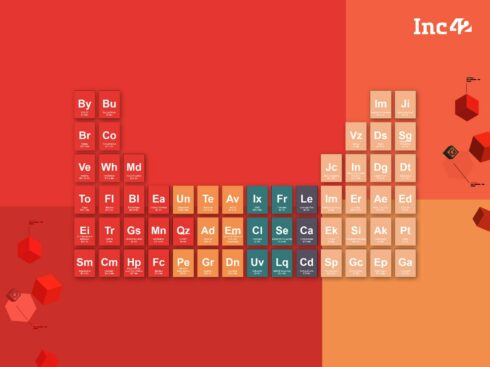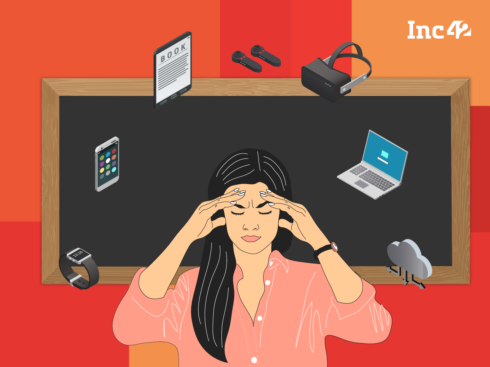SUMMARY
Parents in more mature markets are growing increasingly concerned about screen addiction among children
Research shows that while some screen-time is beneficial, excessive usage leads to mental fatigue
Are Indian parents also feeling the same pressure to limit screen usage as edtech takes over school education?
India's Edtech Moment
Technology is upending the traditional ways of teaching and learning. What does the future of education hold?
“It’s not about how much time they are spending on devices, but what the kids are doing with the screens. Often you see kids by themselves watching some videos or cartoons. That’s definitely unhealthy and creates an addiction.”
For edtech entrepreneur Arpit Jain, the prerogative lies with parents. After all, what do kids know? They see a happy character bouncing around on the screen and it triggers a dopamine response, and then their brain just wants more of that. It’s a feeling that might send shivers down the spine of many parents, but in reality, this is how addiction works.
What makes screen addiction especially dastardly is that those suffering from it find little meaning in interactions outside the screen. Which is what Silicon Valley wants to put a stop to. Let’s think about that for a moment — Silicon Valley giants, leaders of arguably the world’s foremost innovation hub and the largest exporter of tech ideas, want to cut down the screen time for kids and young adults.
But edtech startup SplashLearn founder Jain points out, there’s an easier way out — one which Indian parents have been doing for years. The startup has a Math and English learning platform for the K-5 segment, with presence in many elementary schools in the US as well as in India.
Parents and kids can limit screen time if the learning time is short, he says and adds that cooperative learning or consumption of learning content is a lot more effective for kids and to reassure their parents. With at least one teacher in 70% of US elementary schools using SplashLearn to create lessons, Jain is speaking about the US market from experience. The company entered the market before BYJU’S launched its app in the US last year.
So how does the edtech platform tackle the concerns around increased device usage and screen time?
Jain says the tools to monitor screen time or device usage are great because children should only spend time on useful things and all of this needs to be tracked. Following the example set by WHO in limiting screen time in K-5 age groups, SplashLearn only lets kids to spend just 20 minutes each day on the app. And this may very well be the key to achieving that right balance.
A study titled, “A Large-Scale Test of the Goldilocks Hypothesis: Quantifying the Relations Between Digital-Screen Use and the Mental Well Being of Adolescents” by Amy Orben and Andrew K. Przybylski in 2017 collected information on over 120K young smart devices users in the UK to determine if mental wellbeing went down with screen use.
One of the largest surveys in this regard, it showed that while some screen time is great for mental wellbeing, as the amount of time increases, the mental wellbeing falls down. So clearly there’s a sweet spot that edtech platforms can target.
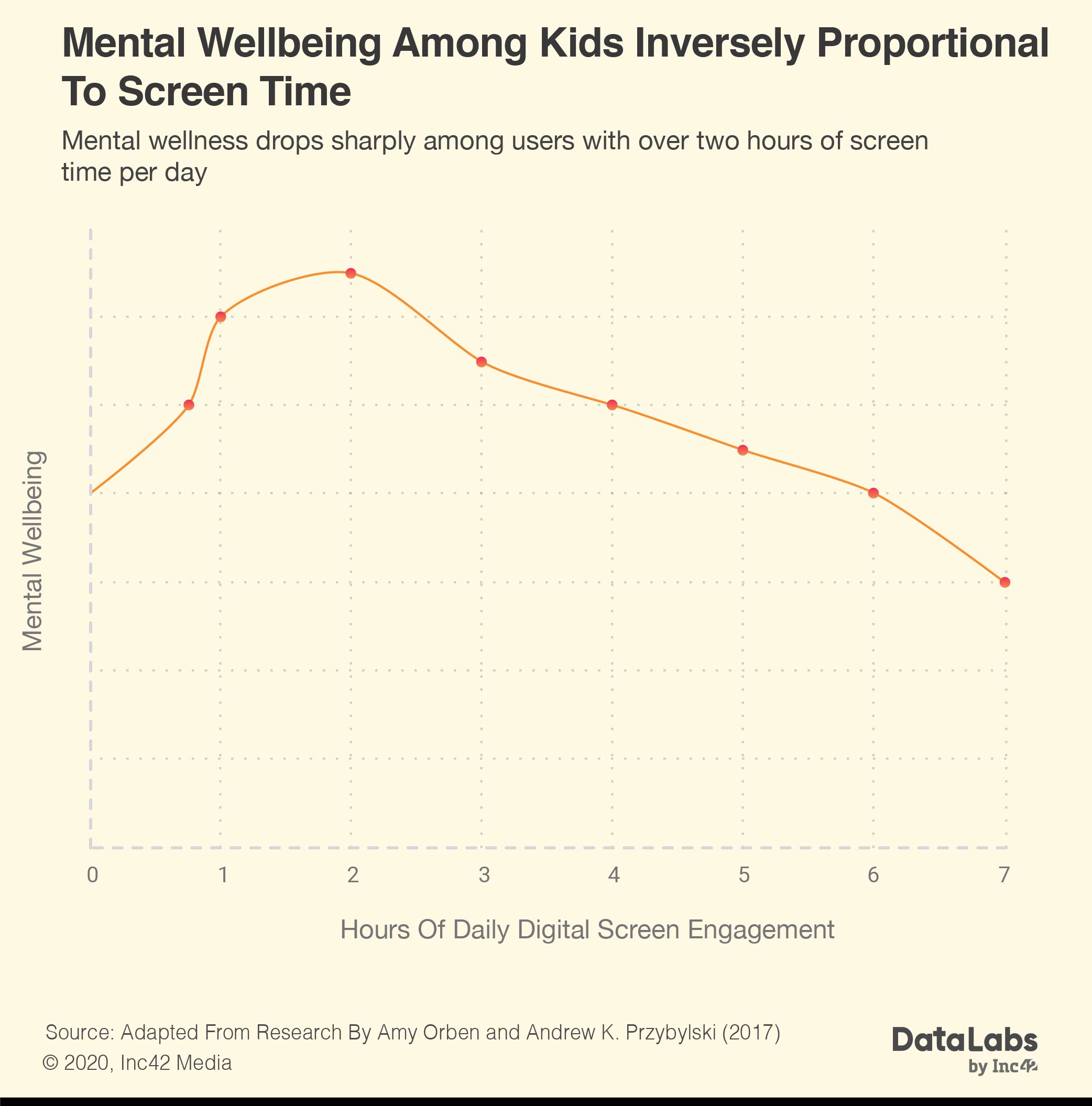
Mindlessly Importing From The West?
Visions from Silicon Valley often travel around the world and take on various shapes and forms stitching together the global tech and startup fabric.
Take India’s obsession with smartphones for instance; it began soon after the Apple iPhone was launched in 2007 and within a decade, India became one of the fastest-growing smartphone markets in the world. Pretty much everything in India is run through smartphones these days — at least as far as urban life is concerned. So why should edtech be any different?
As smart devices and apps started gaining prominence in the West, India was only waking up to the potential of such easy access to technology tools. But in 2020, India is comfortably ahead of the US in terms of app adoption, app creation as well as smartphone usage.
In more ways than one, India is the focal point for tech giants across the globe and with this attention comes the flood of products, services and devices for all ages. But this is where we hit a fork in the road. While the world’s biggest smartphone brands talk about limiting screen time with native tools to curb usage, the app ecosystem these brands foster are pushing for more usage — so much so that there are apps to help people reduce their screen time.
Beyond screen addiction, does the association with entertainment reduce the value of education or does the potentially higher engagement through multimedia help kids learn faster?
“She’s definitely less interested in pen-and-paper work than when it [lessons] is delivered through technology,” says Mumbai-based Priya Sunil Srinivasan about her 10-year-old daughter, who attends an alternative school in the city’s suburb, where most lessons and homework is delivered through smart devices such as iPads and PCs. Having started at a similar school in Bengaluru, Priya had to face the challenge of finding a similar school which promotes higher-order thinking skills (HOTS) rather than textbook-based learning.
“Parents need to keep an eye on whether that’s being exceeded. They need to be part of the learning experience. Leaving kids to do their own thing results in bad outcomes as seen in the concerns raised by parents in Silicon Valley,” SplashLearn’s Jain says citing the ‘Coview’ and ‘Coplay’ principles that many experts on the subject have referred to.
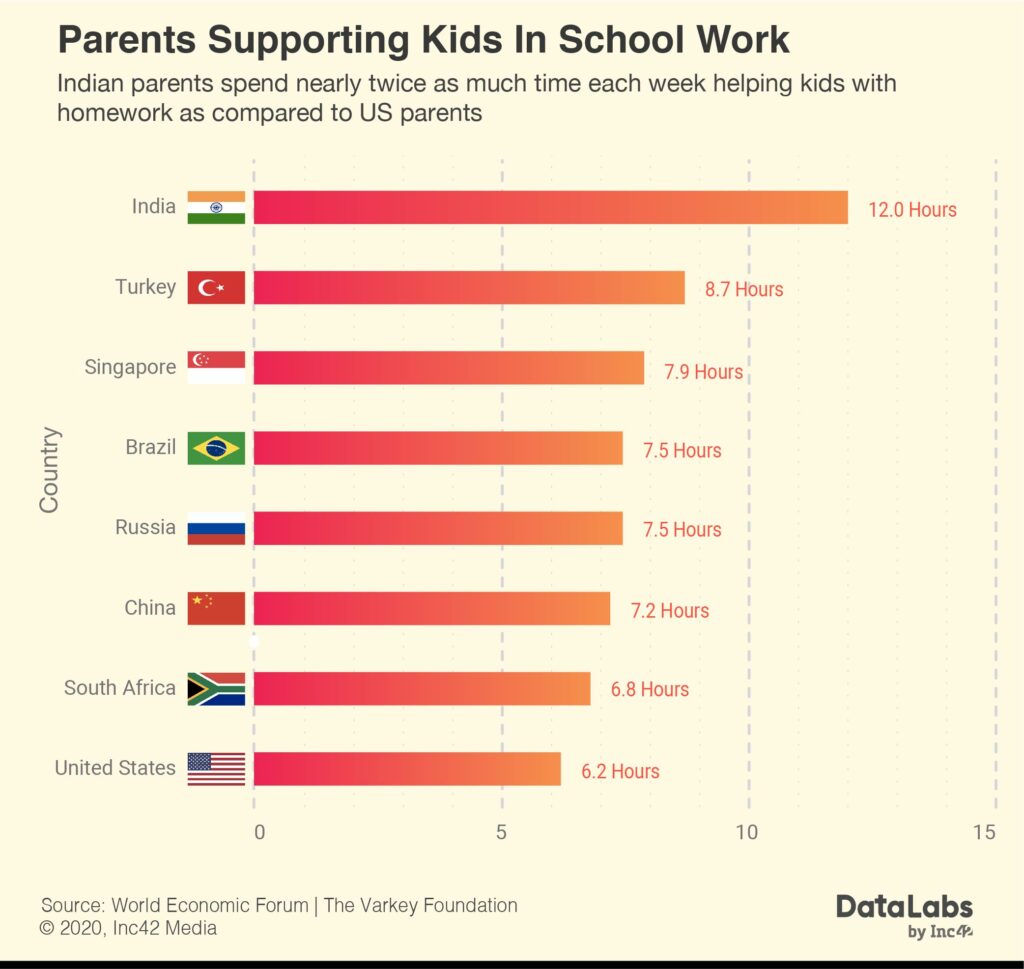
Priya’s daughter’s school in Bengaluru did not rely on written tests, so the 38-year-old was quite concerned that Mumbai would not offer a similar experience. Integration into traditional schools is not as easy as one might imagine for kids who have become habituated to digital lessons. There are actually physical limitations imposed by a device-only regime for learning.
“The issue is the motor skills are not developed to write over long periods like in the past. So if you have to put children who are not used to the formal education system through the regular exams tomorrow, they will just not be able to do it, because their hands are not used to it,” she adds.
But even so, Priya says that monitoring smartphone and tablet usage is harder than keeping an eye on TV or video consumption through streaming platforms. “My only concern is the exposure to Amazon Prime and Netflix,” she adds.
And that brings us to the next conundrum.
Are devices confusing kids with the overlap in entertainment and learning?
How effective is the brand of “edutainment” that many edtech platforms targeting early ages espouse?
After all, if one is so habituated to smart devices that there’s no distinction between leisure usage and learning, then excessive screen time can indeed become a burden.
Testbook founder and CEO Ashutosh Kumar believes the problem with learning going digital so rampantly is that there is no outlet for children. Kids study on smartphones or tablets, and when it’s time for a break, they either play a game or stream some content. There’s just no respite from screens.
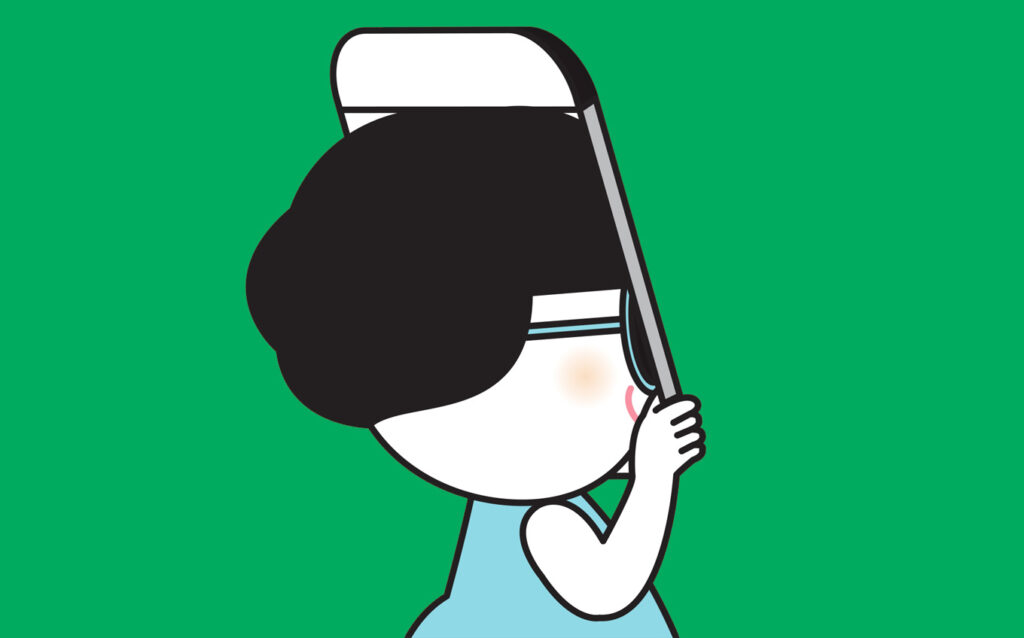
The Line Between Learning And Distraction
“The people who are closest to a thing are often the most wary of it.”
This is how journalist Nellie Bowles led her October 2018 series for the New York Times on the effects of higher screen time on children. Less than two years later, the irony — Silicon Valley companies exploiting consumer behaviour, while also keeping a very strict eye on screen time for their kids at home — is not lost. Silicon Valley parents are also acutely aware of the immense efforts that go into making digital devices extremely addictive.
Kumar has no doubt that children need the right balance of real-world experiences and digital learning and this habit needs to be inculcated among kids in their free time. “When I was growing up, after we finished our homework, we would go outside and play and discover new things outdoors. We explored the world around us. Now all information comes to kids through some digital medium.”
Testbook offers a test prep platform catering to graduates looking to clinch a government job through public service entrance exams. While Kumar does not deal with kids as customers or their parents, he does understand where the concern of parents is coming from. In fact, he pointed out that screen fatigue is not an uncommon problem even for those who have graduated from university in smaller Indian towns and Tier 3 and 4 markets.
“A lot of our core users in northern India have started using tablets and smartphones fairly recently. But as you know their quantum of consumption is high. We hear complaints from our students about eyes hurting or head hurting. This is not something many people in the city acknowledge. So I can imagine that even children would be going through the same thing,” he said.
With everything going digital, no one is surprised that children don’t get the same real-world experiences as students used to do in the past. Even schools are being run on tablets with teachers often staring at screens themselves.
While screen time is a big concern for parents, parents have also come to terms with the fact that this is what some schools want for students. However, in the Indian context, schools are still largely more reliant on physical work such as writing notes and written exams, rather than digital learning.
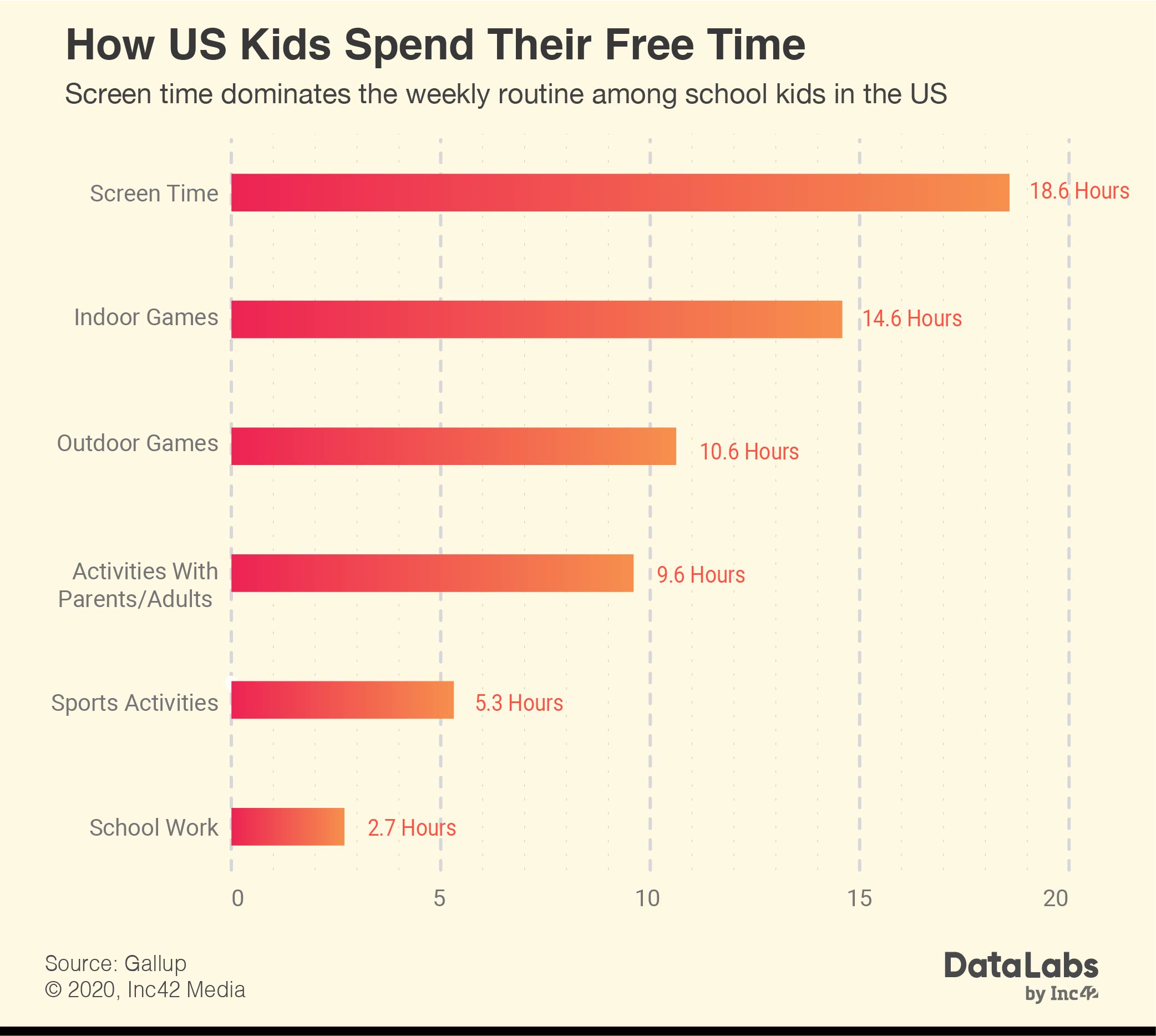
Part of the reason that the US market is attractive for startups targetting the K-5 niche is that this segment does not have too many players in the US. While edtech has been prevalent in the West for a number of years, it has been for college-level courses. Massive online open courses and online college lectures — the precursors to Coursera, Udemy, Khan Academy and others — have flourished in the US for years.
Simply put, edtech is nothing new for Silicon Valley — it has existed since the internet became mainstream. So schools in the US seem to have plenty of devices and computers for students to use. But even so, the early school (K-5) edtech segment is still largely untapped in the US, which is where SplashLearn and BYJU’S are operating.
Here in India, online test prep and digital curriculum for K-12 have so far seen the most development and innovation and this is where the competition is the highest. The US market offers thus a great outlet for Indian startups in this regard, according to SplashLearn’s Jain. But he was quick to warn that the US also has a higher compliance burden thanks to the COPPA or Children’s Online Privacy Protection Act.
His optimism for the K-5 in the US is vindicated by BYJU’S launching its Early Learn product in the US market last year. But he’s also sure that there will be other areas beyond primary education where K-5 apps will eventually venture into, such as coding and STEAM. At the same time, Jain says that students in the K-5 segment are also the most vulnerable to screen addiction, given the rate of digital consumption.
Going After Short-Term Gains?
Doctors have long warned about the effects of excessive screen time among children. “Clinicians should obtain a history of screen-time in children, and advise limiting the screen exposure according to the child’s age. There is a need to generate evidence on burden and effectiveness of interventions among children in the Indian settings, owing to the limited data,” says a 2019 study called “Screen Time in Under-five Children” conducted by the Postgraduate Institute of Medical Education and Research, Chandigarh.
While many agree that edtech apps and content gives easier access to high-quality education, these apps are mostly loaded on smartphones, which have a host of social media and other distractions installed.
“The short-term, dopamine-driven feedback loops that we have created are destroying how society works,” said Chamath Palihapitiya, former vice president of user growth at Facebook, in response to a question about companies exploiting consumer behaviour.
But exposure to new concepts and ideas through digital learning has broadened the scope of conversations even among kids. Going beyond textbooks means creating a new generation of students that know about the things that are happening outside the classroom and also developing interpersonal skills in a better manner. Though, parents do rue the fact that teacher-student interaction has changed dramatically over the years.
Like Priya pointed out there are some benefits to device-based learning, which are not tangible. “I would say that she is more worldly than her peers. The topics she discusses and the conversations she has with people, and her overall awareness is a lot more than someone who might go to a traditional school with textbook-based learning.”
A 2017 study conducted among 907 parents from Silicon Valley revealed that they had serious concerns about the social and psychological side-effects of technology and screen usage on children. Interestingly, educators in high-end private schools (where kids have maximum access to technology) also said that very young children should not be exposed to technology and that it is affecting their attention spans. As one parent in the study said,
“It is hard to know who is credible or true. Doctors say technology is bad, and teachers say technology is good.”
Perhaps the solution in the Indian context lies in laws such as COPPA, which have no equivalent in the Indian legal system. Indeed, data of minors is considered the same as data of regular users in the eyes of the law, and in such a situation, screen time combined with the potential for data collection is a troublesome brew. But beyond data, perhaps India needs to look at screen time checks within any data protection regulations so that kids also get the chance to look at the world outside the tiny rectangle in their palms.








